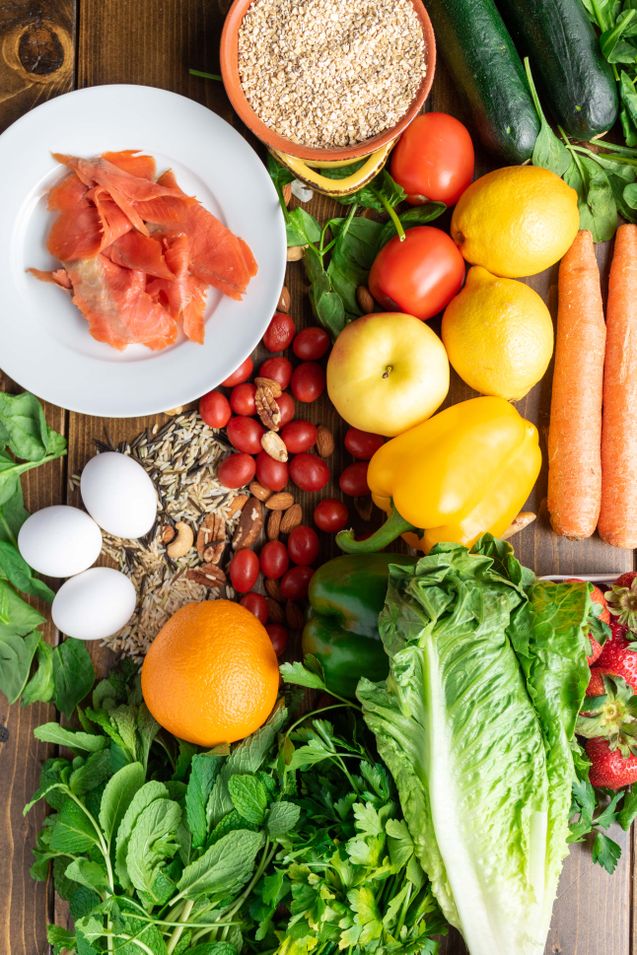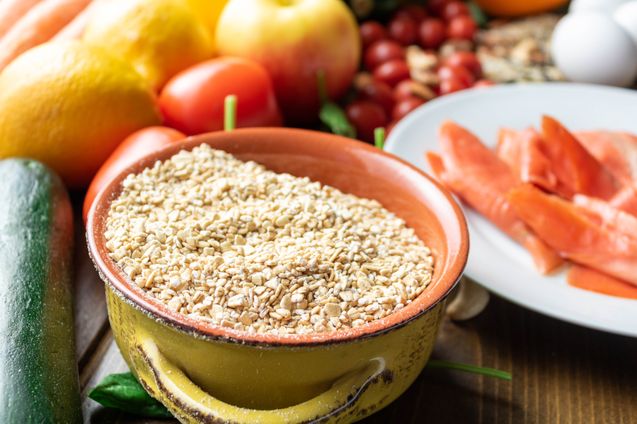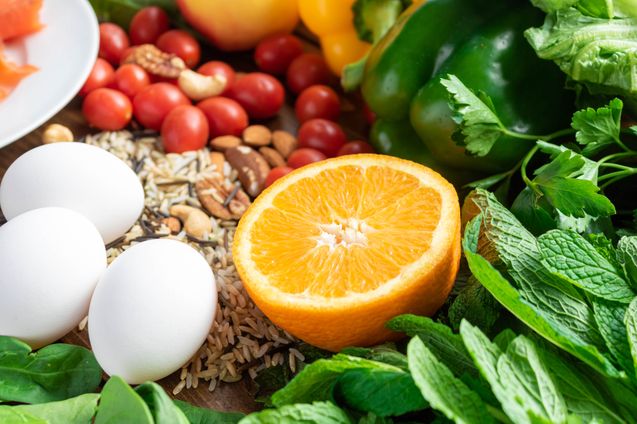Article is from https://www.healthline.com/nutrition/flexitarian-diet-guide#what-is-it
The Flexitarian Diet is a style of eating that encourages mostly plant-based foods while allowing meat and other animal products in moderation. It’s more flexible than fully vegetarian or vegan diets. If you’re looking to add more plant foods to your diet but don’t want to completely cut out meat, going flexitarian may be for you.
The Flexitarian Diet was created by dietitian Dawn Jackson Blatner to help people reap the benefits of vegetarian eating while still enjoying animal products in moderation. That’s why the name of this diet is a combination of the words flexible and vegetarian.
Vegetarians eliminate meat and sometimes other animal foods, while vegans completely restrict meat, fish, eggs, dairy and all animal-derived food products. Since flexitarians eat animal products, they’re not considered vegetarians or vegans.
The Flexitarian Diet has no clear-cut rules or recommended numbers of calories and macronutrients. In fact, it’s more a lifestyle than a diet. It’s based on the following principles:
· Eat mostly fruits, vegetables, legumes and whole grains.
· Focus on protein from plants instead of animals.
· Be flexible and incorporate meat and animal products from time to time.
· Eat the least processed, most natural form of foods.
· Limit added sugar and sweets.
Due to its flexible nature and focus on what to include rather than restrict, the Flexitarian Diet is a popular choice for people looking to eat healthier. The creator of the Flexitarian Diet, Dawn Jackson Blatner spells out how to start eating flexitarian by incorporating certain amounts of meat per week in her book. However, following her specific recommendations is not required to start eating in a flexitarian way. Some people on the diet may eat more animal products than others.
Overall, the goal is to eat more nutritious plant foods and less meat.



Possible Health Benefits
Eating flexitarian may provide several health benefits (1). However, since there is no clear definition of this diet, it’s difficult to assess if and how researched benefits of other plant-based diets apply to the Flexitarian Diet. Nevertheless, research on vegan and vegetarian diets is still helpful in highlighting how semi-vegetarian diets may promote health.
It appears to be important to eat mostly fruits, vegetables, legumes, whole grains and other minimally processed whole foods in order to reap the health benefits of plant-based eating. Decreasing meat consumption while continuing to eat refined foods with lots of added sugar and salt will not lead to the same benefits (2).
Downside to Eating Less Meat and Animal Products
When flexitarian and other plant-based diets are well-planned, they can be very healthy. However, some people may be at risk of nutrient deficiencies when they cut back on meat and other animal products depending on the adequacy of their other food choices. Possible nutrient deficiencies to be aware of on the Flexitarian Diet include (3):
Vitamin B12
Zinc
Iron
Calcium
Omega-3 fatty acids
Flexitarians may also have lower stores of zinc and iron, as these minerals are best absorbed from animal foods. While it’s possible to get enough of these nutrients from plant foods alone, flexitarians need to plan their diets accordingly to accomplish this (4).
Summary
Limited consumption of meat and other animal products may lead to some nutritional deficiencies, particularly B12, iron, zinc and calcium. Flexitarians may be at risk depending on their food choices.
Foods to Eat on the Flexitarian Diet
Flexitarians emphasize plant proteins and other whole, minimally processed plant foods while limiting animal products.
Foods to eat regularly include:
Proteins: Soybeans, tofu, tempeh, legumes, lentils.
Non-starchy vegetables: Greens, bell peppers, Brussels sprouts, green beans, carrots, cauliflower.
Starchy vegetables: Winter squash, peas, corn, sweet potato.
Fruits: Apples, oranges, berries, grapes, cherries.
Whole grains: Quinoa, teff, buckwheat, farro.
Nuts, seeds and other healthy fats: Almonds, flaxseeds, chia seeds, walnuts, cashews, pistachios, peanut butter, avocados, olives, coconut.
Plant-based milk alternatives: Unsweetened almond, coconut, hemp and soy milk.
Herbs, spices and seasonings: Basil, oregano, mint, thyme, cumin, turmeric, ginger.
Condiments: Reduced-sodium soy sauce, apple cider vinegar, salsa, mustard, nutritional yeast, ketchup without added sugar.
Beverages: Still and sparkling water, tea, coffee.
When incorporating animal products, choose the following when possible:
Eggs: Free-range or pasture-raised.
Poultry: Organic, free-range or pasture-raised.
Fish: Wild-caught.
Meat: Grass-fed or pasture-raised.
Dairy: Organic from grass-fed or pastured animals.
(1) https://pubmed.ncbi.nlm.nih.gov/28111625/
(2) https://pubmed.ncbi.nlm.nih.gov/28728684/
(3) https://pubmed.ncbi.nlm.nih.gov/22717188/
(4) https://pubmed.ncbi.nlm.nih.gov/12936958/


